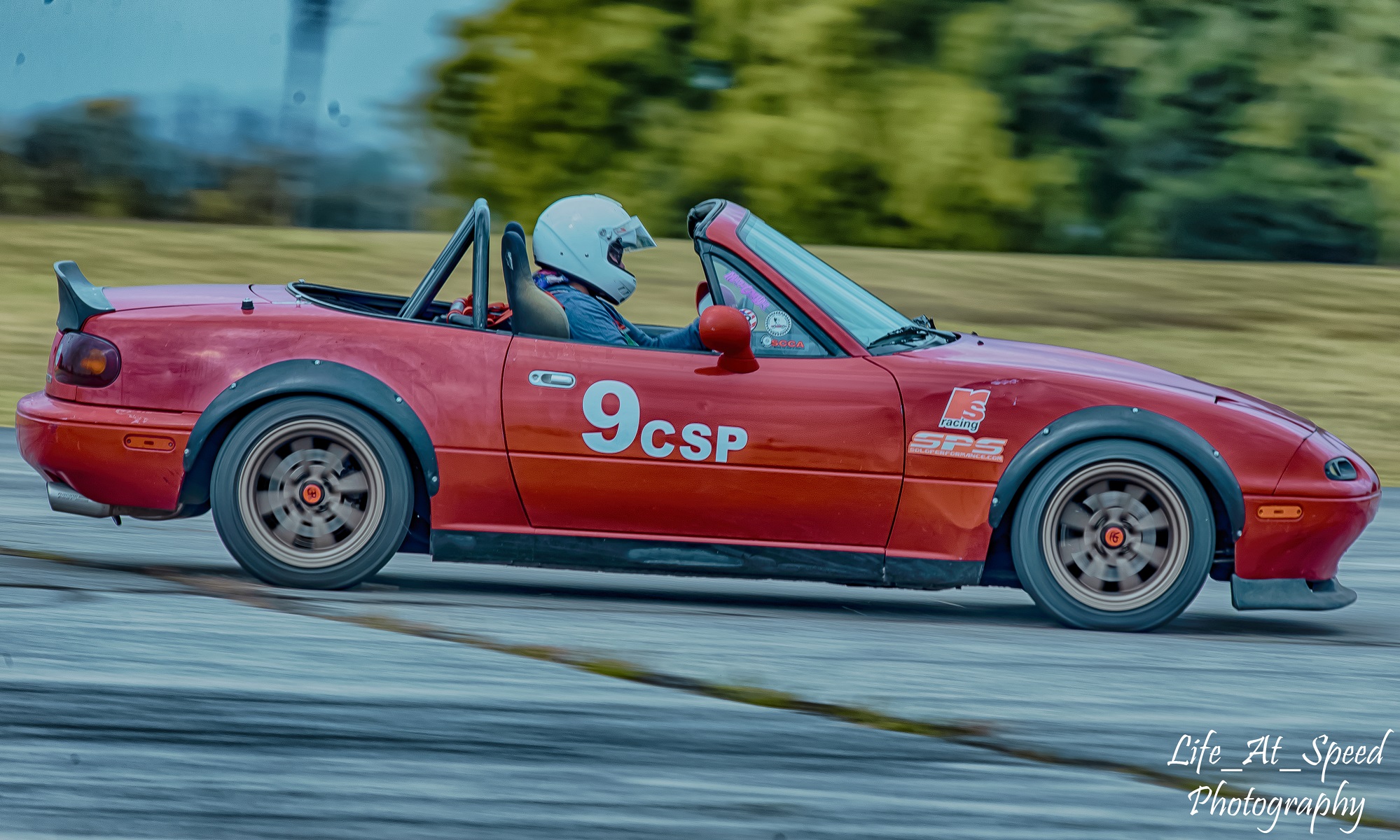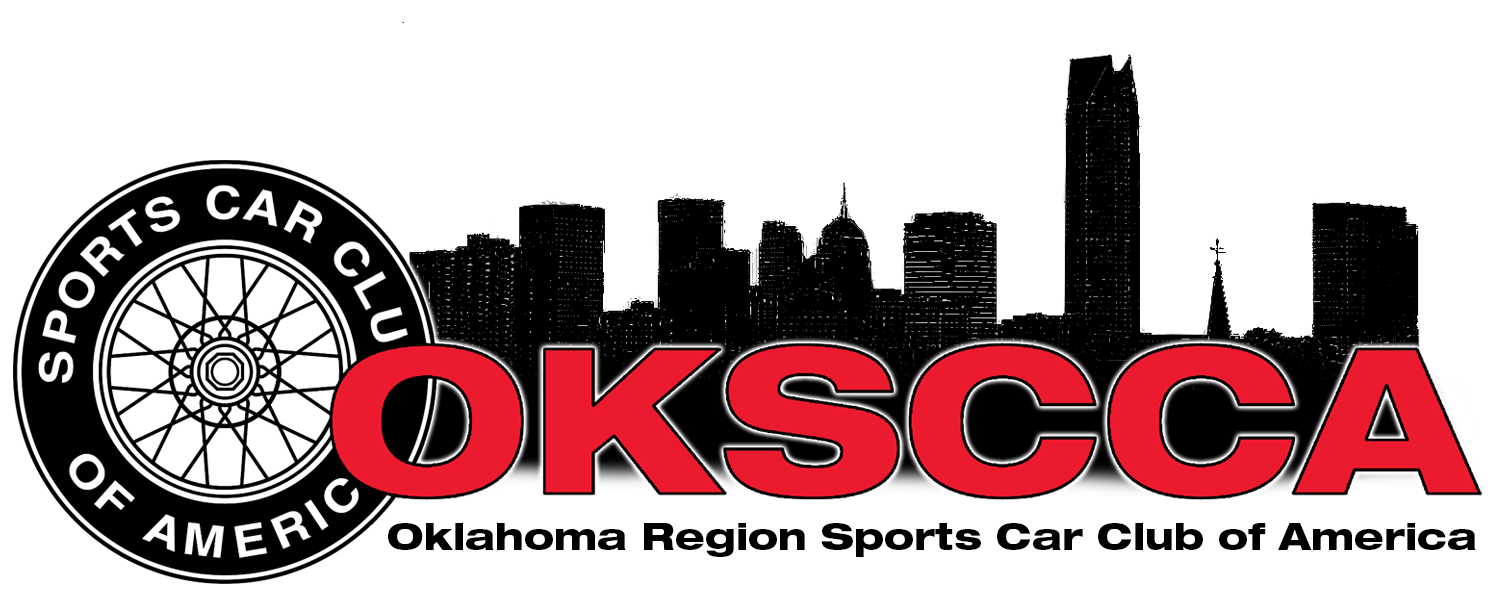Introduction
Welcome to Oklahoma Region SCCA club. If you’re looking for information about getting started in Autocross, you’ve come to the right place. This guide was written for people with little or no experience in Autocross. It includes all of the basics you need to know to get started and helps you sort through some aspects of Autocross that can sometimes be confusing.
What is Oklahoma Region SCCA?
Oklahoma Region SCCA is the Oklahoma City area region of The Sports Car Club of America. The OK SCCA club coordinates autocross events for the greater Oklahoma City area and is one of many in the Sports Car Club of America’s (SCCA) Midwest Division. Other Regions in the Division include the Des Moines Valley, Kansas, Kansas City, Nebraska, Northeast Oklahoma, Ozark Mountain, Salina, Southern Illinois, St Louis and Wichita regions.
What is Autocross?
Autocross is a competition driving event that just about anyone with a car and a license can participate in. When you attend an event you’ll see people with driving skills that range from beginner to advanced. You’ll see cars from
grocery getters to full race cars. Autocross is a chance to drive your car to the track and test your skills and your car’s capabilities in a closed environment. Events are organized and run by volunteers. The Oklahoma Region holds events on Sunday.
Events
If you’re truly interested, you should check out an event to see what goes on. It costs nothing to observe and you’ll learn a lot. Here are some of the things you’ll want to know and that you will observe once you get to the event:
Schedule
An annual schedule of events is always available under the Events menu on the okscca.com web site. Usually the gates open at about 7am and the event ends around 4pm. If you’re coming to observe, you can show up any time you like
between when the gates open and the event is over.
Location
We hold events at Remington Park in Oklahoma City.
What you need
Driver’s License: Unless you’re entering one of the Karting classes, you will need a current driver’s license to enter an SCCA Autocross event. Bring it with you to show the people working registration you’re good to go.
Vehicle in good working order: Although autocross doesn’t require the same safety gear that you might see in race cars, you will need to make sure that your car (or kart) is in good shape with no loose/worn suspension parts, your car battery is securely held in place, your tires have no cord or metal showing, your car’s brakes and seatbelts are in good shape and it has no big fluid leaks.
Helmet: You will need a helmet when you’re driving on course, but you can usually use a “loaner” helmet provided by the host Region of the event. If you bring your own, it has to meet certain safety standards – more than just “DOT-Approved.” The most common certifications are Snell “M” and “SA” and need to have the number 2005 or higher after the letters. ECE R22.05 certified helmets are also allowed and are common at motorcycle shops.
Entrance
When you walk up to the timing trailer, you will check in, make sure you have your drivers license and entry fee (unless you preregistered on MotorsportReg.com) and you will need to sign a liability waiver. You’ll also have to wear a wrist-band proving that you signed the waiver. Minors (anyone under 18) will need to be accompanied by a parent and sign a Minor Waiver Form for admittance. If you bring a child 12 or under, they will have to stay out of the active Grid area.
Paddock and the Grid
The area where most of the cars are parked is referred to as the paddock. You can park anywhere in this area but try and park somewhere away from trailers and tools. A driver on the course or preparing to go on the course may have
been parked near a trailer or tools and will want to return to that spot. Another area marked by cones is called the “Grid”. This is where cars line up before going out onto the course. Don’t park in the Grid.
The Course
The cones on the large lot make up the course for the day. As an observer, you can watch from the paddock or designated spectator area, usually to grass area.
Run Groups
All entrants are split up into run groups (or “heats”). 2 heats in the morning and 2 heats in the afternoon. You will run one heat and work the other heat in the morning and afternoon. There is a lunch break. Each car gets four runs in
each heat, with a total of eight runs. Once those runs are done, the drivers park their cars back in the paddock area and usually get out on the track to work.
Course Workers
The people standing at various points along the track are out there to pick up the cones that are run or bumped over. If you enter an event, you’ll most likely be one of those course workers when you’re not driving. Everyone that drives
also works an assigned position during one heat, but working the course is easy, rewarding, and explained in more detail later.
The Trailer
Event officials and coordinators will be in a trailer. This is where the scorekeeping and announcing is done. It’s best to leave the folks in the trailer alone, but don’t hesitate to approach them for anything important. If you have questions about the event, cars, classes, etc., someone in the paddock area or anybody else that isn’t driving should be able to answer them for you. Most of the people at the event are drivers. Once you’ve been to an event and seen the action, you will probably want to learn what you need to do to get
started. You need to learn about your car, how to register, and many other basics.
Driver Categories
There are several entrant categories depending on experience and other factors. Those who are new to Autocross start out in one of the “Novice” categories. Since this is an actual category, you should get used to that term when referring to yourself with other drivers. Use Novice instead of rookie or newbie or beginner. You’ll move out of Novice and into an Open class eventually but don’t worry about that right now. For the time being, you are a Novice.
Cars and Classes
It is very important to know which “class” your car belongs in. All cars participating in autocross do so in their respective “class”. A stock 1999 Mazda Miata, for example, is in “C Street” or CS for short. The SCCA publishes a guide that indicates the class to which every make, model, and year of car that is eligible to Autocross belongs. If you have not made any performance modification to your car, you can download the SCCA stock car list and determine to what class your car belongs. The list is available in the Solo section of the SCCA site under “Cars and Rules”. You can and make performance modifications on your car and still be in the street category but be careful to stay within the rules of the street category. Even minor modifications can put your car in a class where, as a Novice, you
probably won’t be competitive. Fundamentally, if the rulebook doesn’t say you CAN do a specific modification for a specific class, then you accept that you CAN’T. If you have already made performance modifications to your car, you should check to see if the changes put your car in a class other than stock. The best reference is on the SCCA.com web site. If you have any questions about
modifications and classes, you can visit OKC SCCA Autocross Facebook page and ask. Someone will help you. It’s important to know what class your car is in and to be accurate. When in doubt, ask.
Is that it?
Not even close! Now that you’ve learned most of the basics about getting started, we recommend you check out the OKC SCCA Autocross Facebook page and introduce yourself. You’ll find that autocross attracts a lot of good, helpful people.
Autocross Novice Checklist for the Oklahoma Region SCCA
BEFORE YOU GET TO THE EVENT SITE:
- Preregister at Motorsportreg.com
- Driver’s License and SCCA membership card (if you are an SCCA Member)
- Add air pressure to tires. 40-45 psi is a good start. You can ask for advice in our Facebook Page or at the event!
- Registration is open 7:30 to 8:30, don’t be late!
WHEN YOU GET TO THE EVENT SITE:
- Find a place to park and set up your paddock spot. There are no assigned spaces.
- Unpack car and remove loose items (floor mats, radar detectors, check console, check glove box, etc.)
- Check in at registration trailer, sign the insurance waiver and get a wrist band
- Put class numbers and class Identification on both sides of your vehicle
- Check in at registration trailer
- If not a SCCA member, please fill out the weekend membership form before checking in
- Take vehicle through tech inspection
- Walk the course as much as possible!
- There is a novice walk thru before the driver’s meeting
- Attend Driver’s Meeting, usually 9:00
- Be ready to either run or work first heat
- Lunch break after first two heats
- Be back and ready for third heat after lunch
- After event please help pickup cones and pack trailer
- Results and awards will be announced after everything is packed up.
LASTLY HAVE FUN!

